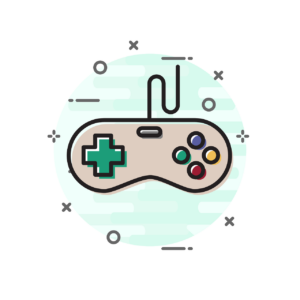We’ve all seen the 1996 movie Matilda, where a 6-year-old genius moves things with her mind. But what if I told you that you could do the same with Brain-Computer Interfaces (BCIs)? This innovative tech is making what seemed like magic a reality. BCIs have the potential to change our future—from helping people with disabilities to revolutionizing gaming. Let’s explore what BCIs are, how they work, and their impact on our world.
What Are BCIs?
A Brain-Computer Interface (BCI) allows you to control things simply by thinking about them. It reads your brain activity and translates those thoughts into actions. For example, you could turn on a light or move a robotic arm, all with just your mind!
How Do BCIs Connect the Brain to Machines?
Normally, when you want to control something—like turning on a light—you think about the action, then use your muscles to make it happen. But BCIs skip the muscle step and go straight from your brain to the action. They detect your brain’s signals and send them directly to devices, like a lamp, to trigger the action. This feature is especially helpful for individuals who can’t use their muscles or communicate in traditional ways.
Why BCIs Could Change Everything
BCIs have far-reaching potential, and they’re not just for people with disabilities. This tech could have widespread applications for everyone. For example, BCIs could monitor your mental health by detecting stress or fatigue. In gaming, BCIs might adjust difficulty based on how engaged or focused you are, making the experience more interactive. Moreover, BCIs could even enhance learning by giving real-time feedback on your concentration levels.
The Science Behind BCIs
Our brains are made up of neurons, cells that send electrical signals to control everything, from movement to thoughts. These neurons communicate through electrical signals, which create distinct patterns. BCIs detect these patterns outside the brain.
Electrodes: How We Measure Brain Activity
To measure brain activity, we use electrodes—small sensors that pick up on the brain’s electrical signals. One common method is the EEG (electroencephalogram), where electrodes are placed on a cap that fits tightly on your head. When you think about doing something, like counting, your brain generates unique electrical patterns. BCIs then teach computers to recognize these patterns and use them to control devices, such as turning on a light or moving a robot.
Key Components of a BCI
A typical BCI has three main components:
- Device to Measure Brain Activity – This usually consists of a headset or cap with sensors.
- Computer to Process Brain Signals – The computer reads the brain activity and interprets your intentions.
- Device to Control – Once the computer decodes your brain’s signal, it sends a command to a device (like a light or robot) to carry out the action.
Types of BCIs
BCIs can be classified into three categories based on their interaction with the brain:
- Non-invasive BCIs – These are the most common and safest. They use sensors placed on the scalp to measure brain activity without surgery.
- Semi-invasive BCIs – These require surgery to place electrodes on the surface of the brain. They offer greater precision and are typically used for medical purposes.
- Invasive BCIs – These are the most advanced, requiring surgery to implant electrodes directly into the brain. They provide the most accurate readings but require surgical intervention.
Real-World Examples of BCIs
- Neuralink: Elon Musk’s company uses invasive BCIs to help restore movement in people with spinal injuries.
- Neurable: A non-invasive BCI that lets you control technology with your mind, like playing a game by simply thinking.
- Synchron: This semi-invasive BCI helps paralyzed patients control digital devices.
Current and Future Applications of BCIs
Medical Uses
BCIs are already helping people with disabilities. For example, they assist paralyzed individuals in communicating or regaining mobility. BCIs could also be used to treat mental health issues such as anxiety, depression, and PTSD. As machine learning improves BCIs, they’ll become even more personalized and tailored to individual needs.
Gaming and Entertainment
In gaming, BCIs could transform the experience by making it more immersive. Picture a game where the difficulty adjusts based on your level of focus or relaxation. BCIs could also open new ways to interact with entertainment and media, providing a more engaging experience.
Education
BCIs could also improve education. By giving real-time feedback on how focused a student is, BCIs could make learning more personalized. This would lead to more effective and accessible learning for everyone.
BCIs As the Future
Brain-Computer Interfaces (BCIs) are changing the way we interact with technology. They have the potential to revolutionize everything from medical treatments to gaming and education. While BCIs are still a relatively new technology, their future possibilities are immense. Whether they’re helping people with disabilities or making gaming more fun, BCIs are on the path to becoming a major part of the future. So, the next time you watch Matilda, remember that with BCIs, you too could one day move things with the power of your mind!
Sources:
- What is BCI? | Calgary Pediatric Brain-Computer Interface Program | Cumming School of Medicine
- How brain-computer interfaces will reshape our lives.
- Invasive Brain-Computer Interfaces and Neural Recordings From Humans – ScienceDirect
- an introduction to the brain-computer interface (bci) and companies working on it
- The Future of Brain-Computer Interface (BCI) – Emerging Trends & Technologies

